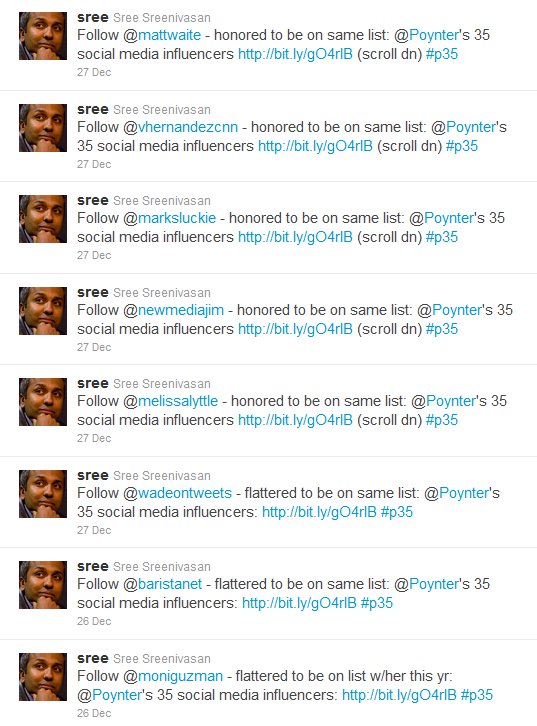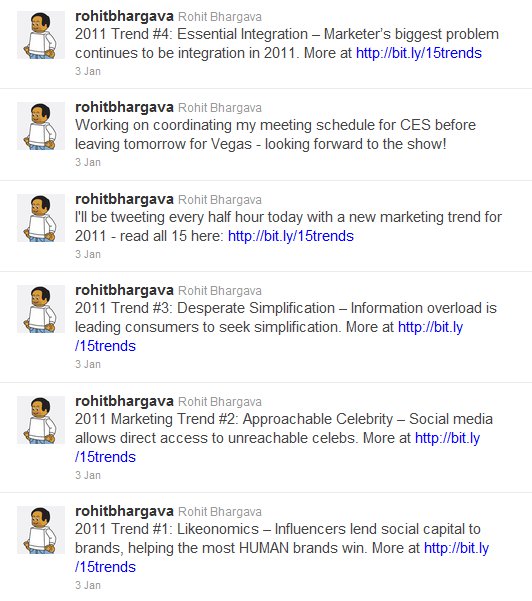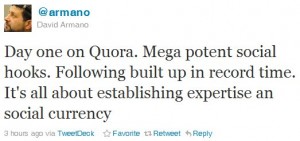Why do you think blogs never took off in India in a big way? Why did it make it big in the US, even though its death bells are being rung now, quite prematurely? Is it because Indians don’t have opinions to share or because Indians are not vocal enough?
Of course not…or, I don’t think so. I believe it may be because of a larger pool of internet users in the US, compared to India, at all times. That means a reasonably decent blogger gets some decent amount of visibility in the US, while it is the extreme opposite in India. With an already small pool of internet users (relatively small), even a good blogger needs to search for readers and that too, over a long period of time. That may explain the differences in follower count too, between Indian and US users of Twitter. Naturally, people with already existing offline influence (journalists, movie stars, politicians etc.) seem to be able to gain online influence faster.
Why this introduction when the title is about social currency? Because of a question from a friend, about self-promotion techniques on Twitter. The friend (she!) wanted me to see a couple of tweets from the timeline of Prof. Sree Sreenivasan, Dean of Student Affairs, Columbia Journalism School!
I was surprised, since I follow @sree and regularly read all/most of his tweets. She pointed out to a series of @sree’s tweets towards the end of December 2010 and asked me what I thought of it. It was a set of tweets where Sree was referring to The Poynter Institute’s 35 influential people in social media. And yes, I have seen these tweets from Sree, so I was wondering what my friend wanted me to see.
She said she found it odd that a person of Sree’s caliber indulge in self-promotion, so ‘blatantly and too often, in the same day‘ (her words). I still did not get it – I didn’t find anything wrong with those tweets from Sree at all.
My friend now seemed a bit exasperated that I wasn’t seeing her obvious point of view. She said she did not expect someone at Sree’s level, a. call upon so many people in individual tweets, 2. tweet so often about he being honored/flattered and 3. do all that self-promotion in one or two days, back to back.
Was she alleging Sree was spamming his followers on Twitter with his self-promotion? Yes, she said. Strangely, I found this tactic very, very smart! He not only called his fellow 35 tweeters from the list, but did so in a fairly humble way. The tweets seem to ego-massage the others and talks of an achievement worth shouting from rooftops. Before I address that point, I have a few more things to add.
Take a look at these tweets from the timeline of Ogilvy’s Rohit Bhargava.
They all point to an impressive blog post/presentation by Rohit Bharagava, on the top 15 marketing and social media trends to watch in 2011 – I had retweeted his original tweet too and a quick look at the show that his page has more than 1,100 hits.
Next, take a look at Australian social media star, Jeff Bullas‘ twitter timeline. If you notice carefully enough, you’d notice an interesting pattern. Many of his tweets are about older, archived posts from his blog. And most of them are reposted via Social Oomph, which allows for scheduling tweets, much like HootSuite and CoTweet.
I tried a small experiment myself, with my blog and my Twitter timeline, in November and December 2010. I tweeted a new blog post of mine 8-9 times each working day, once every hour. I changed the content for each tweet and retained only the link. Nobody said a word about it, till almost end December, when a fellow tweeter complained that he saw a tweet from me, that day, for the 3rd time! On the other hand, page views for my blog increased 200% and comments per post (which is what really, really matters to me), on an average, was about 5-6, as against 1-2, earlier. I even got at least 2-3 unique reactions on twitter, every hour I tweeted it.
Why am I talking about these people and my experiment? It is because I honestly don’t think we can start judging these instances in any way. In other words, I don’t think there is any greater guideline on how to do self-promotion. What works for you is perhaps right and what doesn’t, isn’t.
Every star was a novice at some point. Content is always the king, in my opinion and that is usually the first thing that one needs to work on.
Assuming content is taken care of, the immediate next task is on content promotion, if you need to accumulate social currency. Mere existence of great/brilliant/wonderful content in a place does not make it worthwhile or popular. It needs to be
a. seen by lot of people,
b. seen by a lot of appropriate people,
c. promoted by a lot of people and
d. promoted by a lot of influential people.
These 4 need to happen for good content to fly. This is that elusive viral element we, individuals and brands, have been hankering after. And there are no gospels to guide individuals and brands to say what is the right way.
Some of the rules that apply in the real world apply to the online world too, but unlike real world, online world also allows us to overcome a lot of limitations.
For instance, another friend had told me earlier that he stopped following Jeff Bullas after he found out about him scheduling older blog posts of his. I did not unfollow Bullas because of the simple reason that I take what I want/care for and ignore the rest. If I can do it on television – I choose to consume the ads that interest me; I ignore or switch the channel momentarily if I don’t like an ad – I can most definitely do it online too.
The second point was on frequency of posts, particularly on Twitter. The lady friend (referred to earlier) used my own style to draw a parallel between frequent, repetitive tweets and how it may seem in real life. She felt it looks like I’m repeating the same thing again and again, to the same person, all through the day. I agree, but only partly. Twitter is all about timing, unlike most other social properties. The offline example would rather be like my standing in a room where different sets of people keep walking past. I, of course, say the same thing, once every hour, but I try saying it in a different way each time. It also reaches a different set of people each time and those who have heard me say it earlier, ignore me. If they complain to me, I have a conversation with them.
This is largely what I told her while explaining how I saw Sree’s or Rohit’s tweets.
We all adopt assorted techniques in promoting ourselves via our content/thoughts. We use assorted platforms online to do so. But we gain social currency based only on 2 things – on how good our content/thought is and who read it. The tactic to achieve the latter may differ and various sets of people may have differences over how it is done, but what matters is your personal impression of what works and how it works. There is no place for generalization here.
That said, some newer networks seem to promise faster social currency accumulation.
Like Quora.
It remains to be seen how well it works; good content is again the basis, but as a platform, it may perhaps enable better, targeted content amplification that adds social currency better than other networks.



